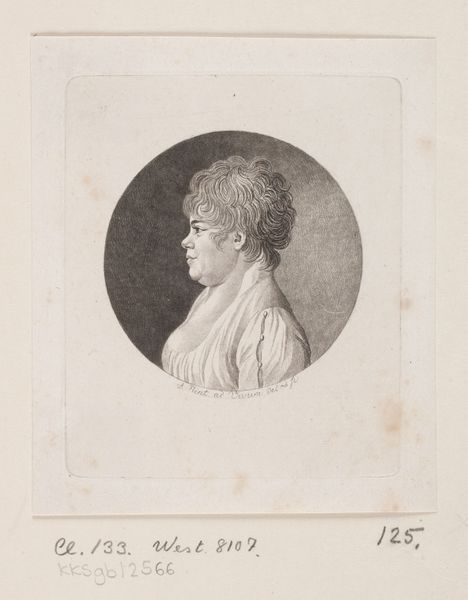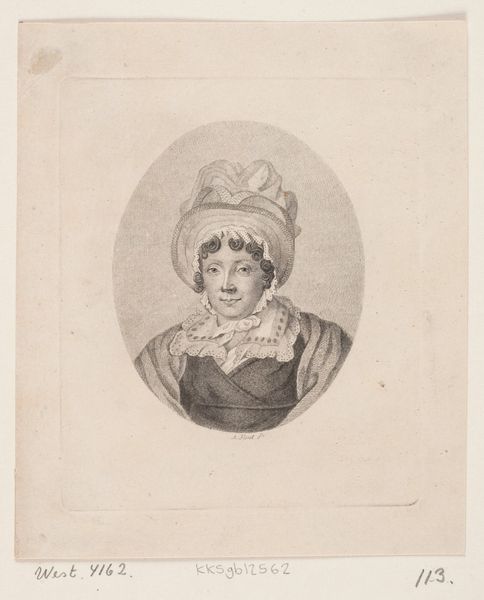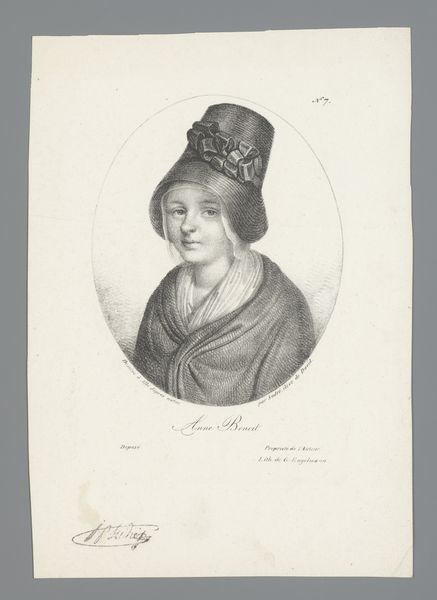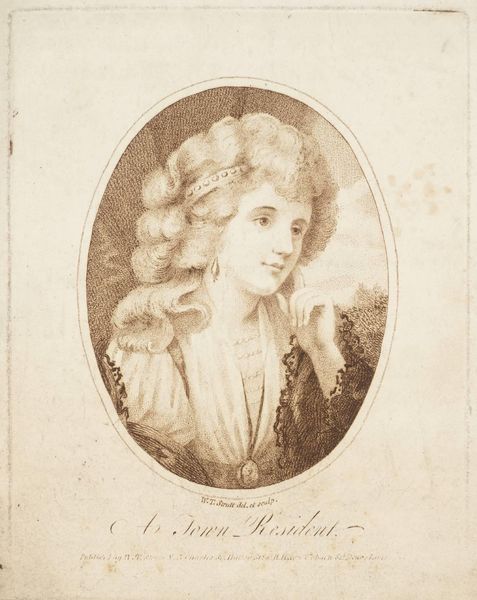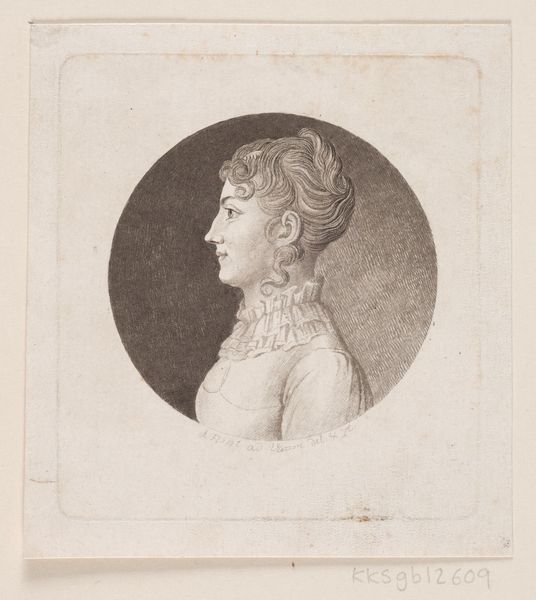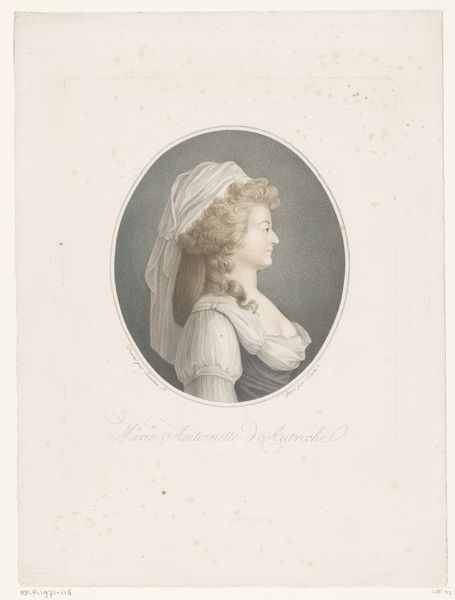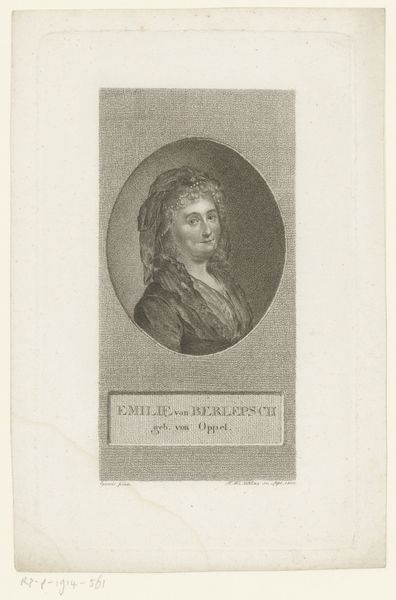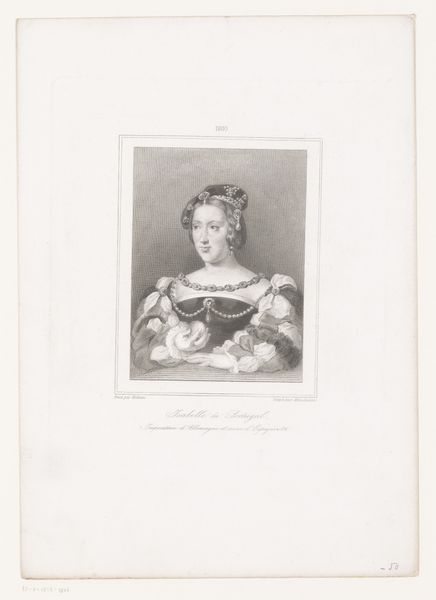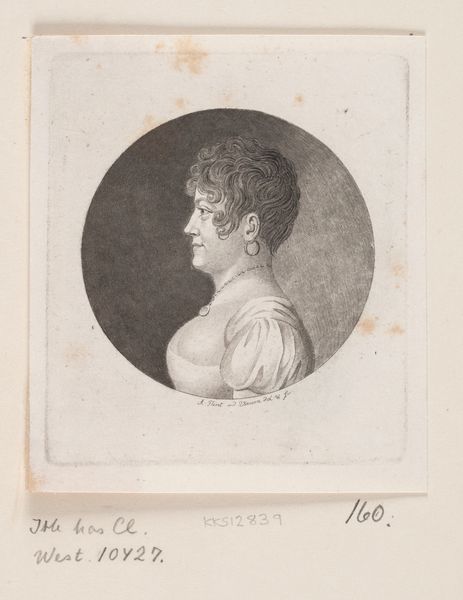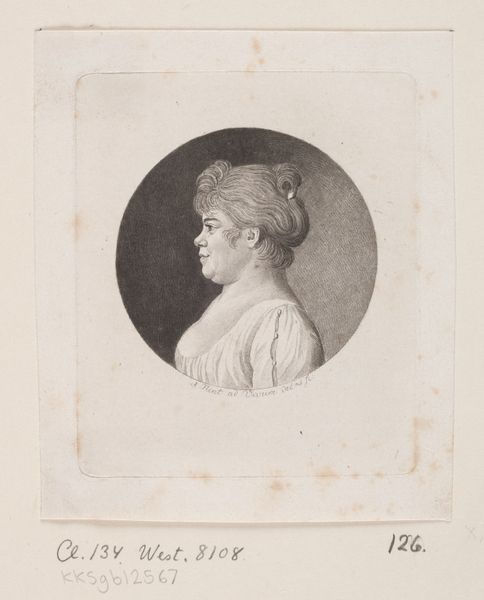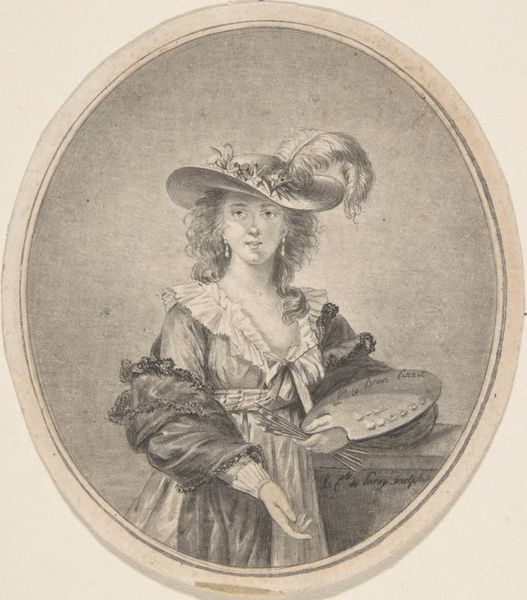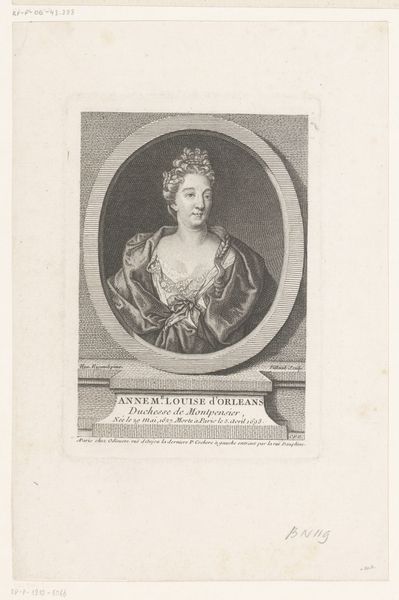
print, engraving
#
portrait
#
pencil drawn
#
neoclassicism
# print
#
charcoal drawing
#
pencil drawing
#
pencil work
#
engraving
Dimensions: 85 mm (height) x 67 mm (width) (plademaal)
Curator: This is a print of Magdalene Sophie Buchholm, dating back to around 1767 to 1824, currently residing here at the SMK. Editor: The precision is arresting. The fine hatching creates subtle tonal shifts, all contained within that strong oval. Curator: Precisely. The work, likely an engraving, exemplifies Neoclassical portraiture’s emphasis on clarity of line and idealized form. Note the subject’s profile, a classical pose echoing ancient Roman busts. Editor: I’m struck by the contrast between the formality of the profile and the slight softness around her eyes. It gives her a certain gravitas but doesn’t completely mask her humanity. What do you think she might represent, culturally? Curator: Certainly, the way she's presented - almost devoid of any context apart from her neatly tied hair and elegant shawl - speaks to a certain class and perhaps the emerging emphasis on individual achievement during that time. These elements convey self-possession, a conscious presentation of status through simplicity. Editor: Yes, those are fascinating details when you read them symbolically! Her profile faces right, towards the future maybe, her clothing implying a virtue rooted in domesticity and modest self-presentation. Her hairstyle—the coiled updo—signals self-control and discipline, which the upper classes valued highly. Curator: Precisely. Also consider how the stark, clean lines emphasize rationality and order, principles revered during the Enlightenment. The deliberate absence of flamboyant embellishments underscores these values through structural elements alone. Editor: A world away from the extravagant displays of previous eras. I notice a touch of wear, the foxing around the edges - does this also change the meaning for you in any way? Curator: In a way, it becomes more profound— a stark portrait etched on fragile paper, almost an allegory of ourselves—a beautiful rendering existing in our space, that inevitably must degrade back into material entropy again. Editor: I think, after analyzing this together, I appreciate its silent assertion even more. A fascinating glimpse into a life, and an era, carefully preserved through precise artistic language. Curator: Indeed. An effective, yet humble image speaking across centuries through line and form.
Comments
No comments
Be the first to comment and join the conversation on the ultimate creative platform.
